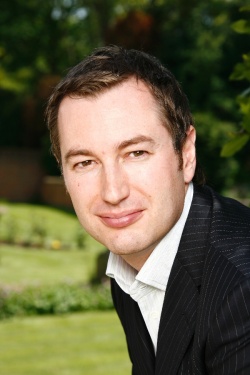Growing global medical leasing market starts to reduce proportion of “frozen capital” in world healthcare systems
Annual growth rates for medical equipment leasing and renting is outpacing growth in the global medical device market
A new report from Siemens Financial Services (SFS) shows that annual growth rates for global medical equipment leasing and renting have now outstripped growth in the medical device market as a whole. The global medical leasing market is currently expanding at a rate of 6.50%, outpacing the 4.98% growth rate of the global medical device market.

With a steadily increasing proportion of healthcare equipment being acquired through asset financing techniques such as leasing and rental, “frozen capital” – inefficiently deployed capital funding as a result of up-front equipment purchasing – in world healthcare systems is gradually being freed up for frontline service. In the UK, close to £2 billion[2] (€2.5 billion) of capital is “frozen” in the heaDenise Hennig,lthcare sector at present – £618 million (€766 million) of capital is tied up in diagnostic imaging equipment and a further £1.3 billion (€1.7 billion) is trapped in other medical equipment categories (e.g. endoscopy, anaesthesia, dialysis, surgery, etc).
David Martin, General Manager for Siemens Financial Services in the UK, says: “The magnitude of frozen capital in the NHS is still very high. In light of stretched public capital and healthcare budget pressure, healthcare financial managers can no longer afford to tie up or freeze precious and scarce public sector capital through outright equipment purchase. They are now prompted to look for efficient financing techniques such as leasing and rental for capital asset acquisition, where the cost of equipment can be spread in regular monthly payments over its useful lifetime, aligned with actual efficiency gains enabled by up-to-date medical technology. As illustrated in our report, growth in the global medical leasing market is outperforming that of the medical device market, slowly chipping away the mountains of frozen capital. In a climate of fiscal austerity, asset finance will prove to be a particularly attractive financing tool.”
Access to up-to-date healthcare equipment is imperative for increasing diagnostic and treatment efficiency, which in turn leads to increased patient throughput rates, lower cost-per-treatment/diagnosis as well as improved patient outcomes. As healthcare costs continue to exceed stretched public capital, only by applying efficient financing techniques such as leasing or rental can future needs be met. An asset-financing plan charges a fixed equipment lease/rental and maintenance cost, thus avoiding the tie-up of scarce liquidity. It also introduces the possibility of technology upgrade in broad line with technology developments and supports the implementation of efficient processes with appropriate equipment. Not only does asset finance help healthcare organisations overcome the affordability issue, it also allows them to devise a much more transparent and sustainable financial strategy in equipment investment.
####
A wide variety of public and private sources were consulted and analysed to calculate the growth rate of the global medical leasing market, the global medical device market as well as levels of frozen capital in various equipment categories across nine countries:- Germany, France, United Kingdom, Spain, China, Poland, Turkey, India and Russia. The analysis took place over the period Feb 2012 - April 2012.
12.06.2012











